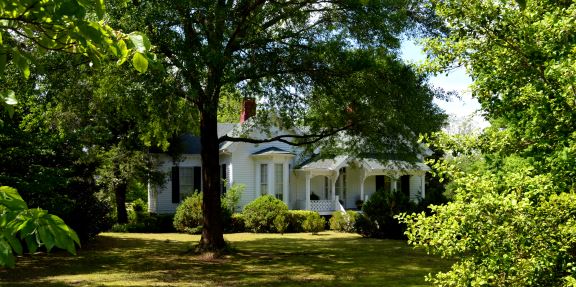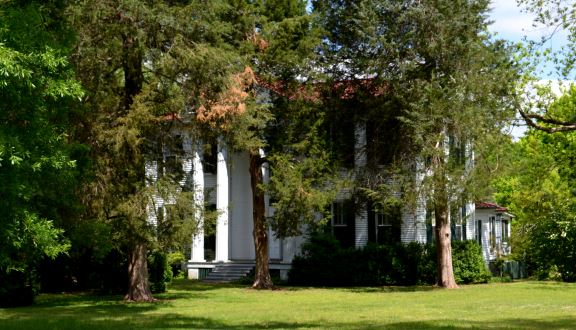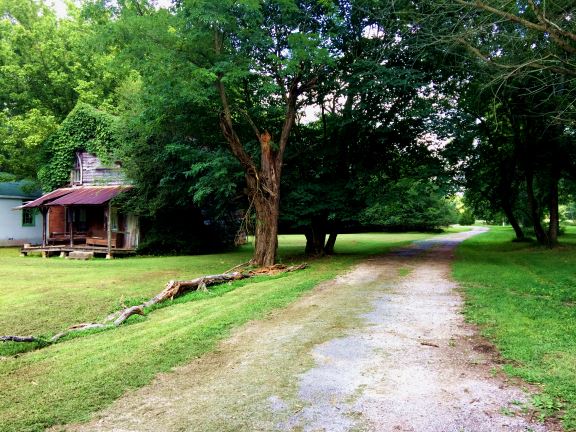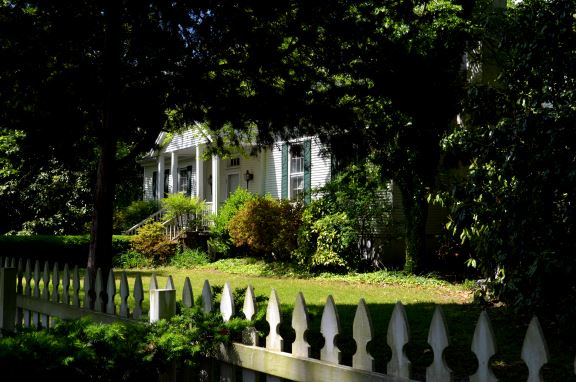Quiet Gentility — LaGrange, Tennessee
by Deborah Fagan Carpenter

A village so beautiful, even the pyromaniacal William Tecumseh Sherman didn’t set it ablaze. La Belle Village, or LaGrange, as it is better known, rests on the bluffs above the Wolf River, about 40 miles east of Memphis, Tennessee. Before the ravages of war, the lovely little village was a center of culture and education, where wealthy Memphians and others built elegant antebellum homes. LaGrange flourished, with two colleges, several churches, several hotels, two drugstores and a number of successful businesses, and even a theatre.
Idyllic life in the community of approximately 3,000 met with an everlasting change when in July of 1861, the entire graduating class of the Presbyterian Synodical College for Men enlisted in the Confederate Army. Following the fall of Memphis less than a year later, the little town would be occupied by both Union and Confederate troops for the balance of the Civil War. Its position on the Memphis-Charleston railroad, which ran east/west, was essential for moving men and supplies, and the very location on the bluff that had been so appealing to the wealthy home owners, became the reason it was strategically ideal for Union occupation. Benjamin Grierson’s famous raid originated in LaGrange, and both Ulysses S. Grant and General Sherman would set up temporary headquarters there.

Charles Wills, a Union soldier of the 103rd Illinois Infantry wrote in his diary in 1863; “This town has been most shamefully abused since we left here with the Grand Army last December…” Over 60 engagements or skirmishes were recorded as having taken place in LaGrange, and a mass grave in the small town cemetery holds the bodies of over 150 Confederate soldiers killed there. Almost 50 homes or structures were destroyed or dismantled to provide firewood for the Union soldiers, and the little town would never return to its earlier prosperous life.
The end of the war did not bring an end of misfortune for LaGrange. A large portion of Main Street was destroyed by fire in 1873, and the Yellow Fever Epidemic of 1878 killed approximately 40 residents and caused a number of homes to be destroyed to prevent spread of the disease. A cyclone in 1900 tore through the small town, devastating many homes, churches and businesses, also killing several people. The storm was perhaps the final blow and prevented LaGrange from becoming a thriving business center again or anything past a small residential community. But in spite of its ill-fated life, the quiet gentility of the little Southern treasure endures.

Today ghosts of the past hover over the peaceful, pristine, little village and point toward its former glory and the inevitable and sometimes accidental tragedies which changed it forever. Many of the pre-civil war homes survive, some grand, some modest, but all painted white with dark green shutters, and all reminding the world of a time gone by. Sidewalks line the streets and flank flourishing gardens or white picket fences, laden with climbing roses or honeysuckle. Spring in the little Southern town is magnificent, teeming with azaleas, lilies and fertile gardens, and one would be hard pressed to find a more beautiful example of spring in the South.
Many of the buildings, once thriving businesses, remain and are often used as antique’s shops or art venues, but one will not find a McDonald’s or even a gas station here. The 200 current residents are quite content to keep their little haven low-key and far away from the throes of commercialism. It is noiseless and intimate, and they intend for it to continue to be peaceful and undisturbed.

Garrison Keillor visited LaGrange in 1991 and wrote: “It’s the most beautiful town I think I’ve ever seen. Just big yards full of flowers, flowering bushes and trees and flowers everywhere, and vines. White houses — white houses, old big rambling white houses with verandas which had never been renovated you know, to their non-existent elegance, but sort of were slowly, quietly moldering like the rest of us. Just a beautiful little town, sitting out there.”

Immanuel Episcopal Church—still serving the community
Photos: Deborah Fagan Carpenter



Wonderful article, Deborah. As I recall, La Grange has a very picturesque cemetery with most interesting tombstones. Many years ago Roy and I spent an afternoon walking and photographing there in the cemetery. Speaking of photographs, yours that accompany the articles are excellent – just another of your many talents!
Thanks for sharing!
Best, Stephanie
Stephanie, thank you so much. Such a nice compliment from the super talent that is YOU!
Let’s try to get together sometime soon.
Captivating and beautifully told…
Well thank you very much sir!